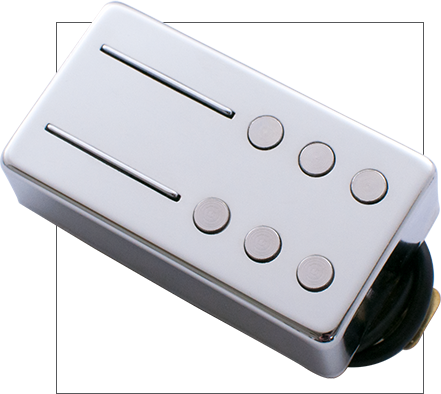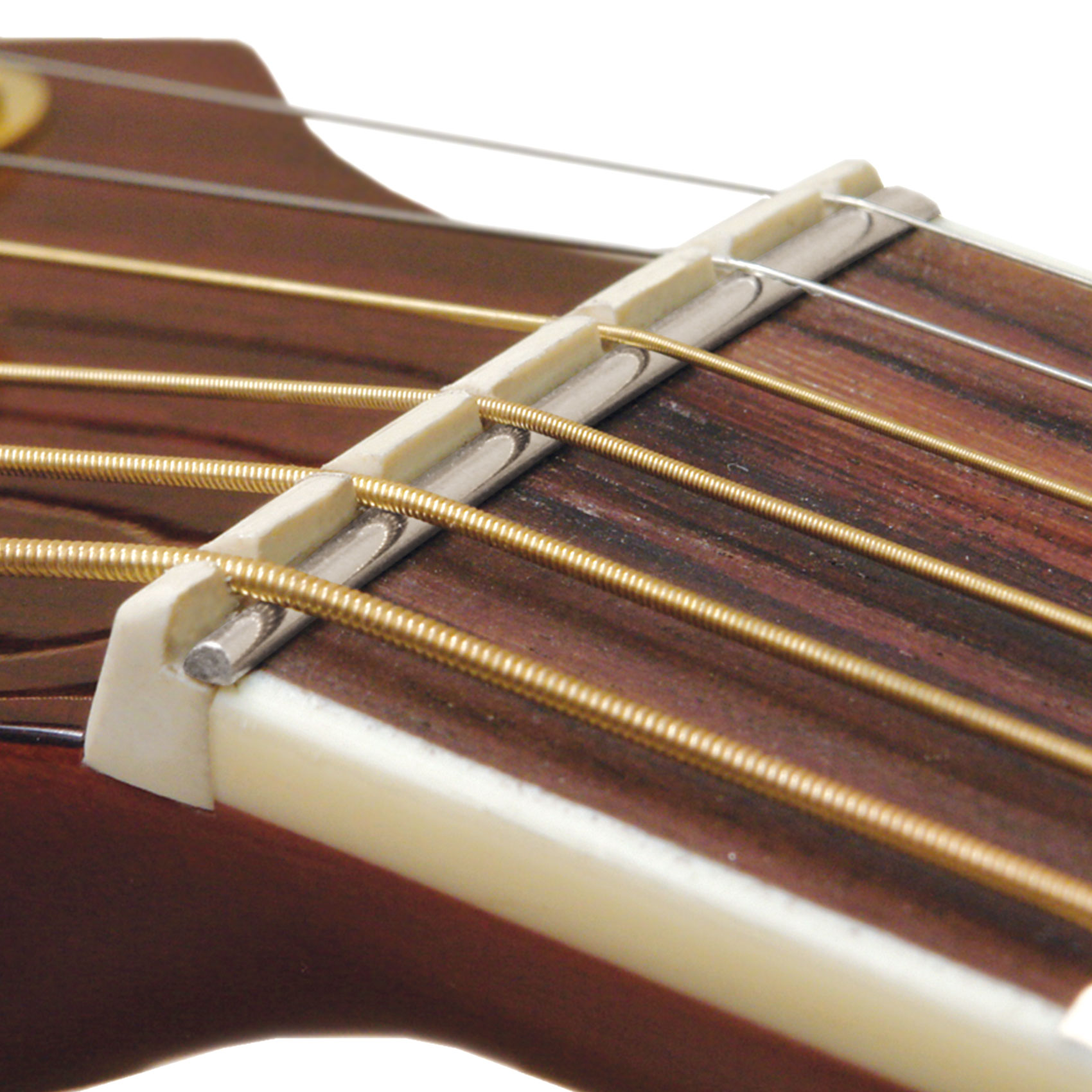-
I found an article that proves Lighter Gauge Strings (for virtually all stringed instruments) allow for Lower action because they don't pull on the neck as tight as heavier strings do:Do Light Gauge Strings Change Guitar Action – FuelRocks. Also lighter gauge strings take up less space than Heavier strings so they're not supposed to move around as much. I made it work by cranking the tailpiece down to the body so that the break angle is higher. I worked around the Volume issue of 10s (and Thinner) on my Archtop Guitar by replacing the Stock Humbucker Pickups w/ these Railhammer Anvil Humbuckers.
 The Bass Strings go over those Rails to give them more Clarity. The Treble strings have Pole pieces but they're bigger than Regular Pole pieces which also makes them sound mellower & darker.
The Bass Strings go over those Rails to give them more Clarity. The Treble strings have Pole pieces but they're bigger than Regular Pole pieces which also makes them sound mellower & darker.
-
01-18-2023 01:16 PM
-
That seems like a flawed conclusion when you add a truss adjustment. All things being equal, a heavier string can go lower but it will still "feel" more tense, harder to play require more effort.
 Originally Posted by s11141827
Originally Posted by s11141827
-
I think you may be misinterpreting this. Because lighter strings of the same design place the neck under less tension than heavier strings, relief in the neck will be reduced if the trussrod is exerting any compression (ie the nut is tightened beyond the initial contact point). But unless there’s something wrong with the guitar, the exact same action can be achieved with any gauge strings by adjusting the trussrod and the bridge. If you go from 13-56 down to 10-49 without adjusting the trussrod, you could even end up with negative relief and an unplayable guitar. A change this drastic in gauge will require a fresh set up on almost every guitar.
 Originally Posted by s11141827
Originally Posted by s11141827
The limiting factor for action on a guitar with no anomalies of neck, top, or bridge is the point at which a vibrating string starts to contact one or more frets, which causes buzzing. Strings under less tension at the same pitch can vibrate through a wider envelope than strings under more tension and require less plucking force to do it. So you can achieve lower action before buzzing with higher tension strings, which means thicker ones if the comparison is between otherwise identical strings.
-
You can find anything you want on the internet, to prove whatever your point of view is. You can find completely contradictory information about the same subject. Anyone with an internet connection can put anything at all up for the public. Contrary to popular belief, not everything you see on the internet is true. People lie, or just have no idea what they're talking about. I attribute the latter to fuelrocks.com.
-
On my solid body, my choice for "slinky" strings are .011s. I can bend them to my satisfaction. On my Archtops I go between TI 13s or D'Addario 12s for similar tension.
Of course on my Manouche guitars, which have a 26.5 scale length, I use Argentine 10s.
-
I had to adjust the truss rod so I could use Lighter gauge strings w/o them buzzing & also added this Zero Glide nut
 also I added Railhammer pickups
also I added Railhammer pickups
-
I found out that to use Lighter strings, you'll have to get railhammer pickups. The truss rod would also need to be loosened.
 Originally Posted by sgosnell
Originally Posted by sgosnell
-
 Originally Posted by skiboyny
Originally Posted by skiboyny
Lighter strings allow for lower action but they also said you need to loosen the truss rod. I avoided the string buzz by having the frets filed down almost flush w/ the fingerboard.
-
 Originally Posted by rsclosson
Originally Posted by rsclosson
OK, a longer scale length allows for lighter strings
-
 Originally Posted by ptchristopher3
Originally Posted by ptchristopher3
Actually most Electric Guitar sites say you can have lower action w/ lighter strings because they file the frets down almost flush w/ the fingerboard.
-
 Originally Posted by nevershouldhavesoldit
Originally Posted by nevershouldhavesoldit
Some musician achieved lower action w/ lighter strings by converting the headstock from a solid headstock to a slotted headstock which puts the strings at a sharper angle over the nut, & they also filed the frets down almost flush.
-
Action is not dependent on fret height - it’s the distance between the undersurface of the string and the top of the fret that matters. The benefit of very low frets with light strings is better intonation. The taller the frets are, the further most of us press the string beyond the point of firm contact (which is all that’s necessary to play the note). Pushing the string closer to the board between taller frets stretches it, so it goes sharp. The lighter / less tense the string, the easier it is to make this happen.
 Originally Posted by s11141827
Originally Posted by s11141827
Intonation seems not to be a high priority for many players of distorted, overdriven, effects heavy rock. But there are players in that genre with the ears and control to maintain it even with tall frets and scalloped boards. Good country players seem much more able to maintain intonation than rock guitarists, in my experience.
-
It’s really clear someone here doesn’t know what “action” means or understand how frets, nut angles, neck relief impact playability.
-
Actually I do know it. With Lighter strings I need to loosen the truss Rod. I got lower action w/ lighter strings (and no fret buzz) by having ultra-low profile frets. Those frets are actually Modified Bar Frets from a Martin 00-18H.
 Originally Posted by omphalopsychos
Originally Posted by omphalopsychos
-
With lighter strings you need to tighten the truss rod, because there is less string tension. Fret height has no effect other than changing the height of the nut slots above the frets, and that can be changed by changing the depth of the slots. Next time you're in WalMart, pick up a clue.
-
I think you're confusing things a bit. Action is the distance between the tops of your frets and the bottoms of your strings. You can have exactly the same action whether your frets are tall or tiny. But very low frets leave much less room between the strings and the board, so your fingers can't go as far below the fret tops before they're in full contact with the board. The lighter your touch on the fingerboard, the less of a difference you'll feel. But especially if you fret firmly, lower frets feel like lower action if you don't realize what's causing it.
 Originally Posted by s11141827
Originally Posted by s11141827
Your truss rod sets and holds relief, which is a slightly concave bow measured as the action at the 8th fret when a string is fretted at both the 1st and the 12th fret with capos. Most guitars and most players need at least a tiny amount of relief to avoid any fret buzz etc. A perfectly flat board (i.e. zero relief) requires a truly perfect setup to play well up and down the neck. Some relief makes a guitar more forgiving of many setup errors, as does higher action. The truss rod does affect action, but mostly between the 5th and 10th frets. Bridge height also affects action, and also not uniformly.
A perfect setup requires that the frets be leveled so that they're all at equal height above the board. The arc across their bottoms has to properly match the arc of the fingerboard and frets (which should be concentric, with the radius differing only in the height of the frets). Similarly, the bridge saddle slots have to be cut so that the arc of the strings is proper. Nut slot depth, neck relief, bridge saddle height etc all have to be balanced to achieve uniform action at the desired level and to make the guitar playable without problems. Action is generally set about 2 thou higher on the lowest string than on the highest, because the thicker the string and the lower the pitch, the wider the excursion of its vibration.
No single factor can make a guitar play perfectly, although any of them can prevent it.
-
+1 The above information should end this thread. All that needs to be stated regarding this subject has now been stated.
 Originally Posted by nevershouldhavesoldit
Originally Posted by nevershouldhavesoldit
-
It's not just a matter of .11 vs .13's
Each guitar has to be set up in conjunction with the chosen strings. A well tuned guitar with. 12 maybe easier to play than another with . 10's if the nut is poorly filed, frets are not leveled and bridge saddle heights don't match the fingerboard and nut radius and truss rod properly set. If you've never experienced a guitar that has had a well done pro set up, you will be very pleasantly surprised.
-
don't forget neck angle, a big factor in playability and sound.
-
I would just like to mention two slightly interesting things.
Some strings oscillate more than others, depending on the manufacturing design.
Lighter gauges can feel like they have a lower action, because they have less tension at the same pitch as a larger gauge.
-
 Originally Posted by GuyBoden
Originally Posted by GuyBoden
There are Exposed Core strings which are made essentially like Piano strings & those allow for lower action. So w/ Lighter strings you loosen the truss rod, & w/ heavier strings you need to tighten the truss rod.
-
My Guitar has frets that have been shaved down flush w/ the Fretboard so I can use lighter strings & lower action.
-
Surely not completely flush, otherwise it's play like a fretless guitar! I suppose one advantage of super low frets is that people who prefer slinky strings avoid going sharp when pressing too hard. Does bending feel different with super low frets?
 Originally Posted by s11141827
Originally Posted by s11141827
-
I’m so glad this thread has been resurrected
-
Actually w/ lighter gauge strings you can get lower action by extending the scale length by a few extra inches so instead of 25.5 inches maybe 30.5 inches. A longer scale length allows for lighter strings & brighter tone. For a guitar to work perfectly w/ ultra-light strings, its scale length would have to be 3 feet longer than it currently is.




 Reply With Quote
Reply With Quote



Moving from bedroom to stage...
Today, 08:38 AM in From The Bandstand